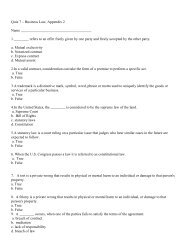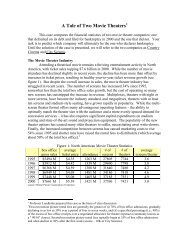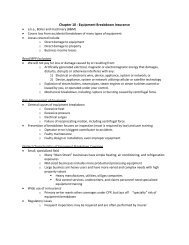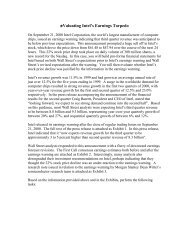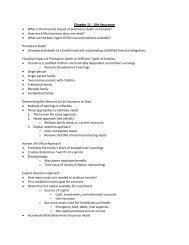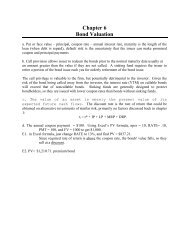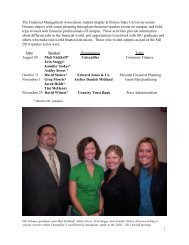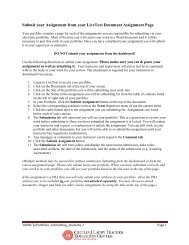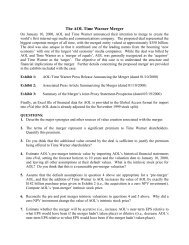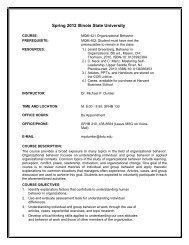Forecasting for the Love Boat: Royal Caribbean Cruises in 1998(
Forecasting for the Love Boat: Royal Caribbean Cruises in 1998(
Forecasting for the Love Boat: Royal Caribbean Cruises in 1998(
You also want an ePaper? Increase the reach of your titles
YUMPU automatically turns print PDFs into web optimized ePapers that Google loves.
Demand <strong>for</strong> a Cruise VacationTo date only 11% of <strong>the</strong> U.S. population has ever taken a cruise. However, a recentcruise <strong>in</strong>dustry survey of people over <strong>the</strong> age of 24 found that 56% are <strong>in</strong>terest<strong>in</strong>g <strong>in</strong>cruis<strong>in</strong>g sometime <strong>in</strong> <strong>the</strong> future and 31% responded that <strong>the</strong>y will def<strong>in</strong>itely take a cruise<strong>in</strong> <strong>the</strong> next five years. Demographic trends also favor <strong>the</strong> cruise <strong>in</strong>dustry. As <strong>the</strong>demographic profile showed, 42% of recent cruise passengers are between <strong>the</strong> ages of 40and 59. As <strong>the</strong> baby boomers age, this segment of <strong>the</strong> U.S. population is estimated togrow at more than three times <strong>the</strong> national population growth rate over <strong>the</strong> next threeyears, as seen <strong>in</strong> <strong>the</strong> figure below.3.50%annual population growth rates by age3.00%2.50%2.00%1.50%1.00%0.50%0.00%-0.50%-1.00%-1.50%-2.00%1999 2000 2001age 24 and under age 25-39 age 40-59 age 60 and overAlong with growth <strong>in</strong> <strong>the</strong> US population, it is possible that <strong>the</strong> amount of vacationtime per <strong>in</strong>dividual will <strong>in</strong>crease over time. Numerous studies have shown that <strong>the</strong> babyboomer generation values recreation more highly than previous generations. This isillustrated <strong>in</strong> <strong>the</strong> next figure that plots grow rates <strong>in</strong> <strong>the</strong> U.S. gross domestic product(GDP), personal consumption and recreation expenditures. As figure shows, growth <strong>in</strong>personal consumption maps closely to growth <strong>in</strong> <strong>the</strong> gross domestic product (GDP). Bycomparison, recreation spend<strong>in</strong>g has grown faster than personal consumption <strong>in</strong> everyyear s<strong>in</strong>ce 1980, with <strong>the</strong> gap between <strong>the</strong> two <strong>in</strong>creas<strong>in</strong>g dramatically after <strong>the</strong> 1991recession. This <strong>in</strong>crease is widely attributed to <strong>the</strong> consumption tastes of <strong>the</strong> babyboomer generation. The figure also shows <strong>the</strong> <strong>1998</strong> Congressional Budget Office’s<strong>for</strong>ecasts <strong>for</strong> future GDP growth.



